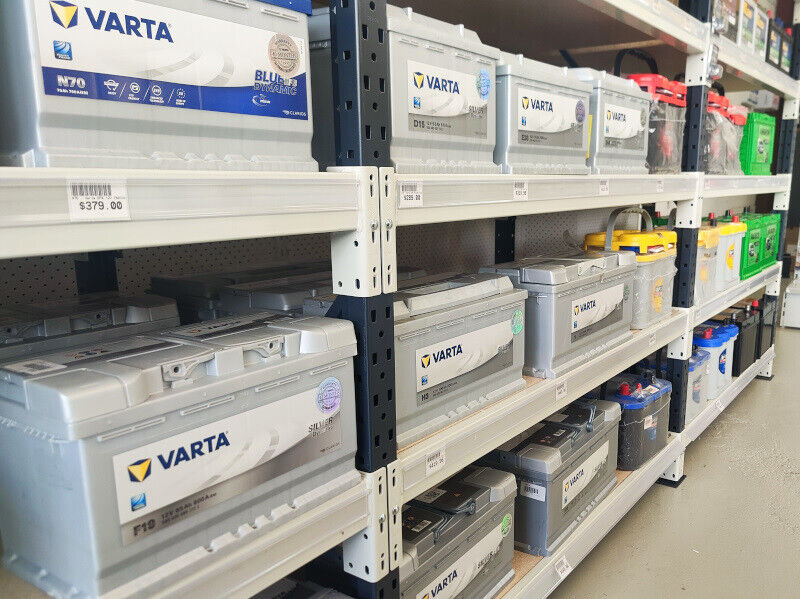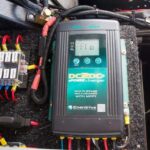Replacing your car battery is critical to keeping your vehicle running smoothly. This is the heartbeat of your car, powering everything from the ignition to your lights and essential electronics. However, over time, even the best ones lose their charge and performance.

With so many options available, how do you choose the best one for your car? Read on to explore what factors to consider to ensure your car starts reliably every time, no matter where the road takes you.
How Do I Choose a Car Battery?

Reliable Supplier
One of the most important factors is picking a reputable and specialised batteries store. It’s essential to go with a supplier that’s been around for a while and knows the ins and outs of car batteries. A store that isn’t owned by a battery manufacturer or importer will offer the most independent and unbiased advice, ensuring that you’re getting the best option for your specific vehicle. Look for a battery shop with a strong track record of excellent customer support.
Expert advice can also make a lot of difference, especially when it comes to finding a battery that meets your vehicle’s needs while offering longevity and reliability. Having access to knowledgeable staff who understand the ins and outs of different types, brands, and compatibility can save you time and money. A store with genuine expertise will help guide you to the right choice.
Type
When browsing through a batteries store, there’s a lot more to consider than just picking one off the shelf. Different vehicles require different types, and understanding what’s out there can help you make the best choice. Here’s a quick look at the most common types available:
- Flooded lead acid: These are the traditional car batteries and the most common. They’re reliable but may need occasional maintenance, like topping off the electrolyte;
- Enhanced flooded (EFB): A step up from regular flooded variations, these are better for vehicles with start-stop technology and generally last longer;
- Valve-regulated lead acid (VRLA): Sealed and low maintenance, these don’t vent gases and are safer for many cars;
- Absorbent glass mat (AGM): Known for their high performance, AGM options are ideal for modern cars with high power demands;
- Gel cell: A type of VRLA battery, gel cells resist high temperatures and vibrations;
- Lithium-Ion: Found in newer hybrid and electric cars, these options charge faster, last longer, and are lighter.
Size
Another important factor to consider when shopping from a batteries shop is the size, which is indicated by the BCI number. This number, set by the Battery Council International, tells you the dimensions of the item and the placement of its terminals. Choosing the wrong BCI number could result in a product that doesn’t fit properly or has terminals that aren’t accessible for your cables. To ensure the right fit, check the BCI number on your old device or consult your car’s manual before making a purchase.
Cold Cranking Amps
The Cold Cranking Amps (CCA) is also a key factor, especially if you live in colder climates. It measures how much power the device can provide for 30 seconds at 0°F (or -17°C). While a higher CCA rating indicates better cold weather performance, it doesn’t necessarily mean the device is “better” overall. A higher CCA just gives you more power for starting the engine in freezing conditions. Going beyond the CCA specified by your car manufacturer won’t make much of a difference but can offer extra peace of mind in extreme cold.
Freshness
When shopping from a battery store in Australia, it’s important to check the manufacturing date. Since batteries begin to degrade as soon as they’re made, the fresher they are, the better their performance will be. Look for a date code on the label, usually in the month/year format (e.g., 08/21 for August 2021). Aim for a device that’s no more than six months old to ensure you’re getting the most out of its lifespan. A fresher model means better reliability and longer-lasting power for your vehicle.
Testing Your Battery

Car batteries are mostly maintenance-free these days, compared to other car components like lights and brakes, which require more frequent checks. However, it’s still important to keep an eye on their health. Before hitting the road for a long trip, it’s a good idea to have yours checked. A mechanic can load-test it annually once it’s two years old if you live in a warmer climate, or after four years in colder areas. This test shows how well the battery holds voltage while you use it. Also, inspect the terminals to ensure they’re tight and free from corrosion.
Most of these devices last between three and five years, but their age is a big clue for when it might be time to visit the battery shop again. You can find the manufacturing date on a label, typically located on the top or side. This will tell you how old it is, and if it’s getting close to the end of its life, it might be time to start shopping for a new one.
Recycling
When it’s time to replace your car battery, don’t forget about recycling your old one. These devices contain harmful lead and acid, but fortunately, they’re highly recyclable. Almost every battery shop offers to take your old device off your hands when you purchase a new one, often charging an extra fee that’s refunded once you return the old one. This not only encourages recycling but also helps reduce environmental impact. People recycle about 90% of these devices, making them one of the most successfully recycled products out there.





















